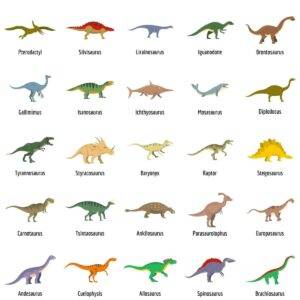Many different types of dinosaurs have been discovered, but only a relatively small number of these have become household names. Here is a list of the most popular dinosaurs.
What makes a dinosaur popular? Size is important; there are many dinosaurs like T. rex, but T. rex, being among the biggest, is the one that we remember. Uniqueness is also a factor; Spinosaurus has become popular because of the huge sail on its back and crocodile-like features. The popularity of Archaeopteryx is due to its importance in our understanding of the transition from dinosaur to bird.
The appearance of a particular dinosaur in popular culture can also boost its popularity. Therizinosaurus was already known as a highly-unique dinosaur, but its popularity was assured when it appeared in the movie Jurassic World Dominion.
List Of The Most Popular Dinosaurs
Allosaurus
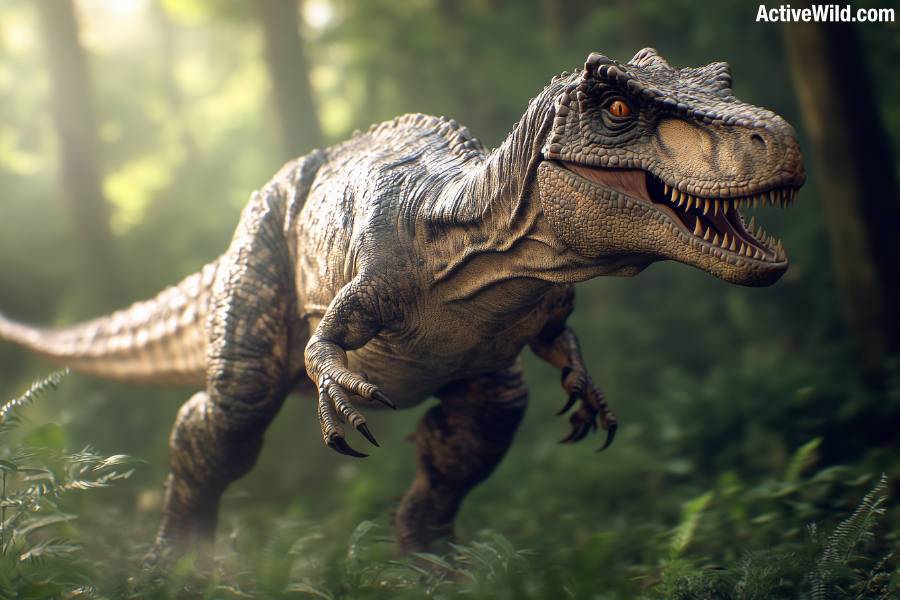
- Type: Theropod (Carnivore)
- Where Found: North America (USA), Europe (Portugal), Africa (Tanzania)
- When it Lived: Late Jurassic (155-145 million years ago)
T. rex may have ruled the Cretaceous Period, but its counterpart in the earlier Jurassic Period was the equally fearsome Allosaurus.
Allosaurus was a large carnivorous theropod that lived during the Late Jurassic period, around 155-145 million years ago, in what is now North America and parts of Europe and Africa.
Reaching up to 30-40 feet in length and weighing around 2-3 tons, it was one of the top predators of its time, preying on herbivores such as Stegosaurus and Diplodocus (both of which you’ll find on this list).
You can find out more about this dinosaur on this page: Allosaurus Facts
Ankylosaurus
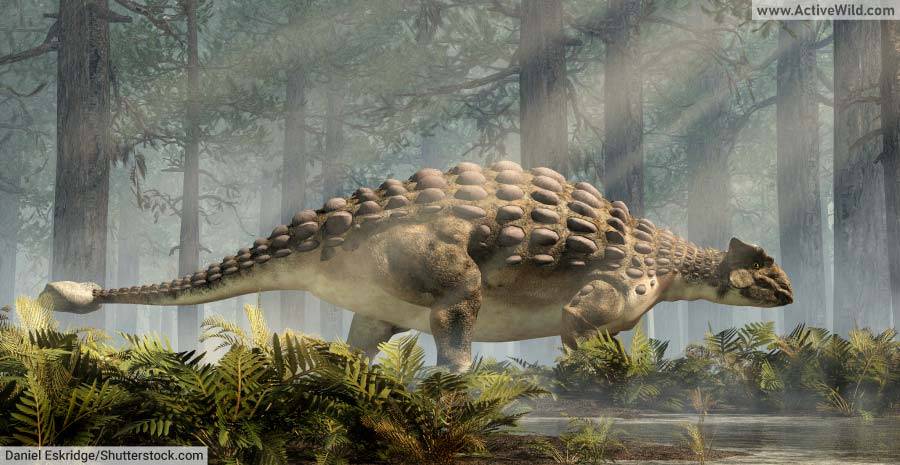
- Type: Ankylosaurid (Herbivore)
- Where Found: North America (USA, Canada)
- When it Lived: Late Cretaceous (68-66 million years ago)
Ankylosaurus was a heavily-armored dinosaur known for its distinctive bony plates covering its back and its massive club-like tail, which it likely used as a defensive weapon against predators. It lived during the Late Cretaceous period, around 68-66 million years ago, in what is now North America.
Ankylosaurus could reach up to 25-30 feet in length and weighed around 4-8 tons. This popular dinosaur is a member of the group Thyreophora, also known as “armored dinosaurs”, on behalf of their heavily armored bodies. Also in this group was Stegosaurus.
You can find out more about this dinosaur on this page: Ankylosaurus Facts
Apatosaurus
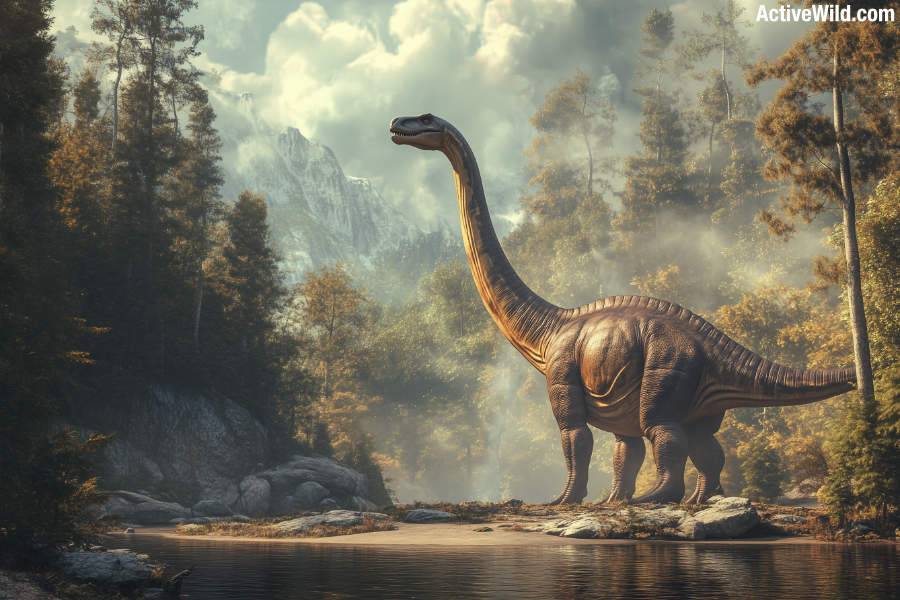
- Type: Sauropod (Herbivore)
- Where Found: North America (USA)
- When it Lived: Late Jurassic (154-150 million years ago)
Apatosaurus was a massive sauropod dinosaur that lived during the Late Jurassic period, around 154-150 million years ago, in what is now North America.
Measuring up to 75 feet in length and weighing around 20-30 tons, Apatosaurus is known for its long neck and whip-like tail, which it may have used for defense against predators. It had a small head compared to its body and likely fed on vegetation from trees and shrubs.
You can find out more about this dinosaur on this page: Apatosaurus Facts
Archaeopteryx
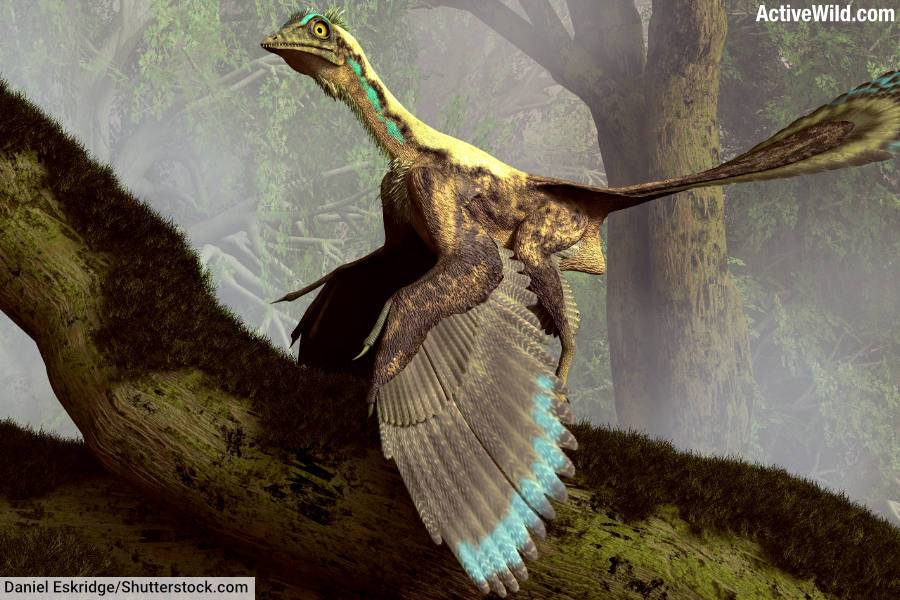
- Type of Dinosaur: Theropod (Avialan, Feathered Dinosaur)
- Where Found: Europe (Germany)
- When it Lived: Late Jurassic (around 150 million years ago)
Archaeopteryx was a small, feathered dinosaur that lived during the Late Jurassic period, around 150 million years ago, in what is now Germany. It is considered a transitional species between non-avian dinosaurs and modern birds.
This popular dinosaur was about 1.5 feet in length and weighed around 2 pounds. Whether or not Archaeopteryx was capable of true, flapping flight, or simply gliding, is not known.
Archaeopteryx had feathered wings and a long, bony tail, with a blend of avian and reptilian features, including teeth, claws, and a wishbone. Its discovery provided key evidence for the evolution of birds from theropod dinosaurs.
Its iconic status as the “first bird” has made Archaeopteryx a significant figure in paleontology and a popular subject in evolutionary biology.
You can find out more about this dinosaur on this page: Archaeopteryx Facts
Brachiosaurus
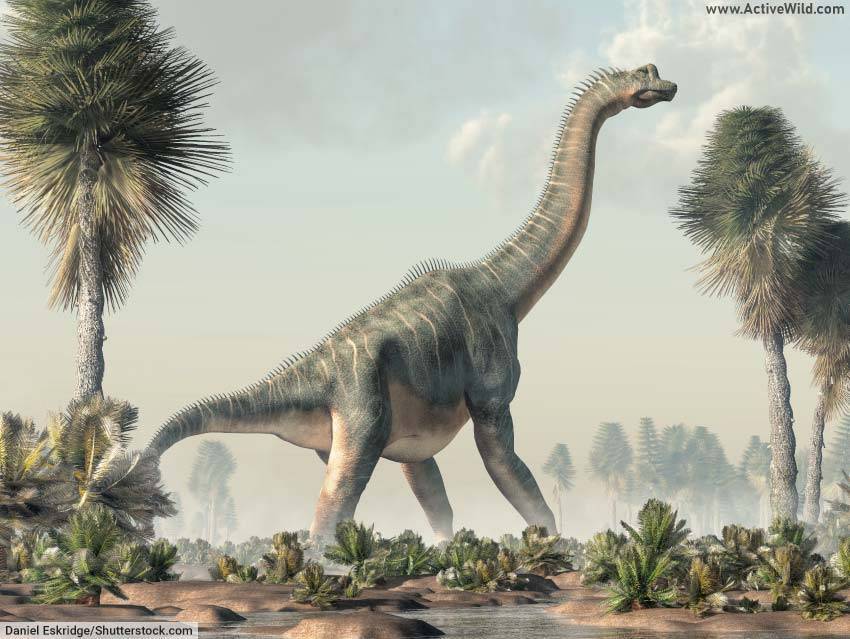
- Type: Sauropod (Herbivore)
- Where Found: North America (USA) and Africa (Tanzania)
- When it Lived: Late Jurassic (154-150 million years ago)
Brachiosaurus was a large sauropod dinosaur with a long neck, small head, and front legs longer than its hind legs, giving it a distinctive, giraffe-like stance. It lived during the Late Jurassic period, around 154-150 million years ago, in North America and possibly Africa.
Reaching lengths of up to 85 feet and weighing as much as 40-80 tons, Brachiosaurus is often depicted as a gentle giant, grazing on tall trees inaccessible to other herbivores. Its popularity soared with its memorable depiction in Jurassic Park, where it was shown peacefully feeding on treetops (and sneezing over Lex Murphy as she was petting it).
You can find out more about this dinosaur on this page: Brachiosaurus Facts
Carnotaurus
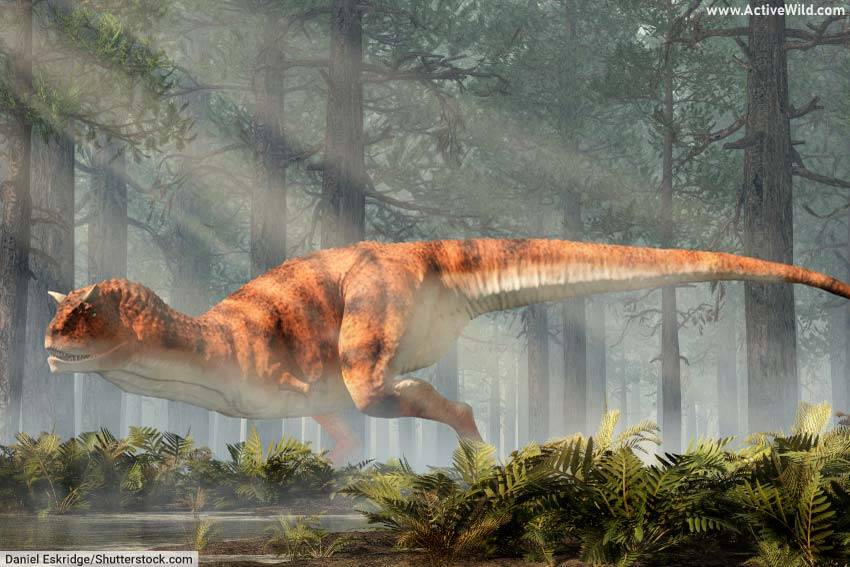
- Type: Theropod (Carnivore)
- Where Found: South America (Argentina)
- When it Lived: Late Cretaceous (71-69 million years ago)
Carnotaurus was a distinctive theropod dinosaur known for its unique appearance, with two prominent horns above its eyes and a short, bulldog-like snout. It lived during the Late Cretaceous period, around 71-69 million years ago, in what is now South America (Argentina).
Carnotaurus was about 25-30 feet in length and weighed around 1.5 tons. It was a fast, bipedal predator with unusually short arms, even shorter than those of T. rex.
The unique horned skull and powerful, muscular build of Carnotaurus have made it a popular dinosaur, and it appeared in Jurassic World: Fallen Kingdom and other dinosaur-themed movies and games.
You can find out more about this dinosaur on this page: Carnotaurus Facts
Ceratosaurus
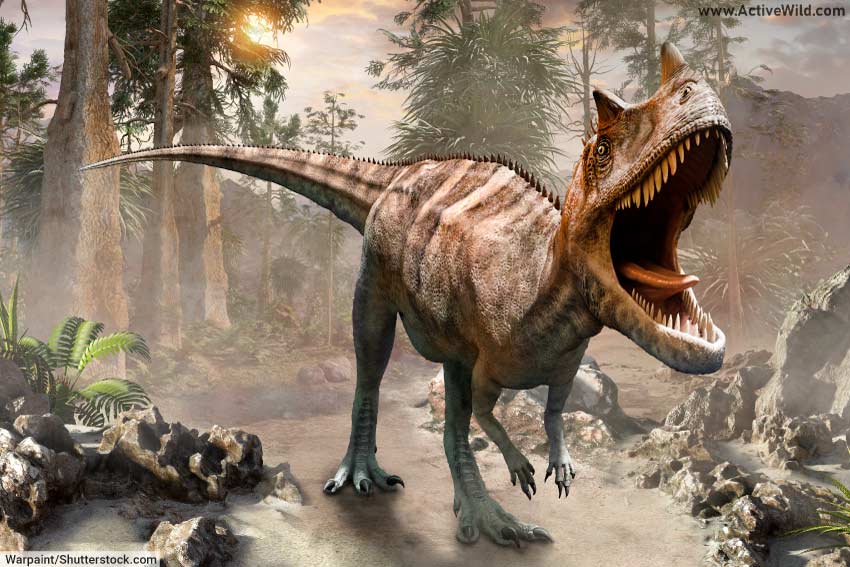
- Type: Theropod (Carnivore)
- Where Found: North America (USA), Europe (Portugal), Africa (Tanzania)
- When it Lived: Late Jurassic (153-148 million years ago)
Ceratosaurus was a medium-sized theropod dinosaur known for its distinctive nasal horn and a row of small osteoderms (bony plates) running down its back. It lived during the Late Jurassic period, around 153-148 million years ago, in what is now North America, as well as parts of Europe and Africa.
Measuring up to 20 feet in length and weighing about 1-2 tons, Ceratosaurus was a carnivore that preyed on smaller dinosaurs and possibly scavenged. Its unique combination of features—like its horn, which may have been used for display or combat—makes it a popular dinosaur in films and documentaries.
You can find out more about this dinosaur on this page: Ceratosaurus Facts
Compsognathus
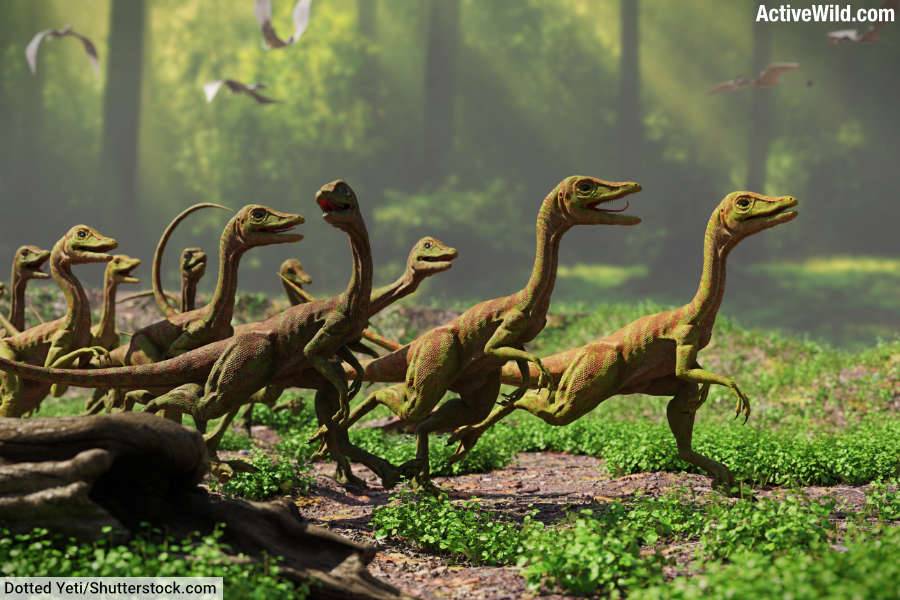
- Type: Theropod (Carnivore)
- Where Found: Europe (Germany, France)
- When it Lived: Late Jurassic (150 million years ago)
Compsognathus was a small theropod dinosaur known for its nimble and agile nature, living during the Late Jurassic period, around 150 million years ago, in what is now Europe (Germany and France).
Measuring about 3-4 feet in length and weighing around 6 pounds, it was roughly the size of a modern chicken. Compsognathus was a carnivore that likely fed on small vertebrates and insects.
Its small size and depiction as a pack hunter in movies like Jurassic Park: The Lost World have made Compsognathus one of the best-known small dinosaurs.
You can find out more about this dinosaur on this page: Compsognathus Facts
Deinonychus
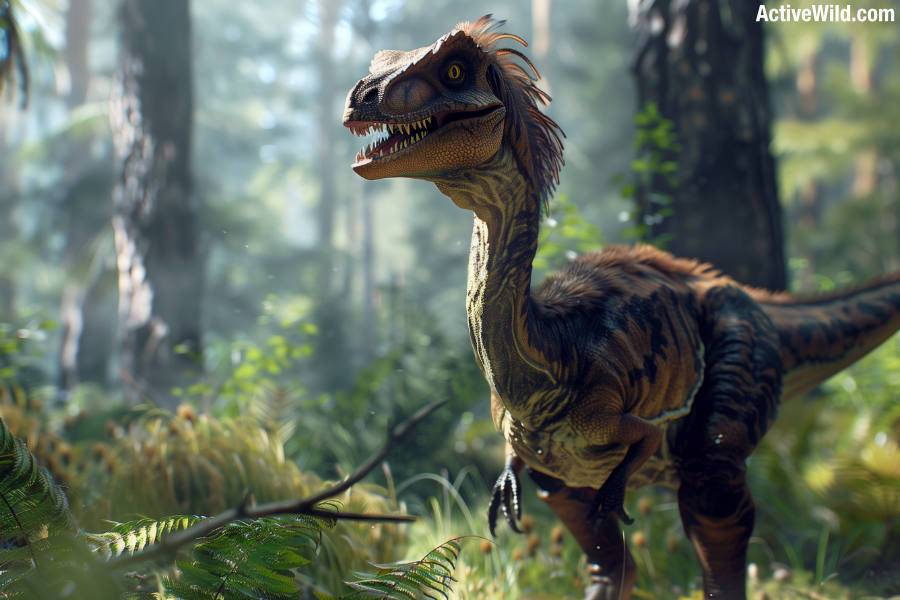
- Type: Dromaeosaurid (Carnivore)
- Where Found: North America (USA)
- When it Lived: Early Cretaceous (115-108 million years ago)
Deinonychus was a mid-sized dromaeosaurid theropod dinosaur renowned for its agility, intelligence, and the large, sickle-shaped claw on each hind foot.
This popular North American dinosaur, which was about 10-11 feet in length and weighing around 160 pounds, lived during the Early Cretaceous period, around 115-108 million years ago.
Deinonychus was a swift and formidable predator that likely hunted in packs. Its discovery revolutionized the perception of dinosaurs as active and dynamic creatures.
While Velociraptors gained fame in Jurassic Park, the film’s portrayal was inspired more by Deinonychus than the real-life Velociraptor.
You can find out more about this dinosaur on this page: Deinonychus Facts
Diplodocus
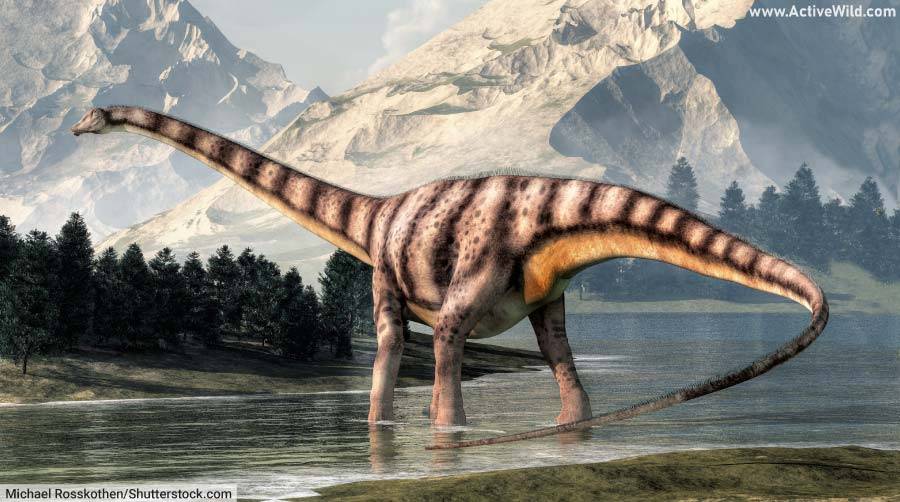
- Type: Sauropod (Herbivore)
- Where Found: North America (USA)
- When it Lived: Late Jurassic (154-152 million years ago)
Diplodocus was a long-necked sauropod dinosaur that lived during the Late Jurassic period, around 154-152 million years ago, in what is now North America. It is famous for its remarkable length, reaching up to 80-90 feet, with a long tail that it may have been able to crack like a whip.
Weighing around 10-15 tons, Diplodocus had a slender, elongated body and a small head with peg-like teeth, ideal for stripping leaves from tall trees.
You can find out more about this dinosaur on this page: Diplodocus Facts
Gallimimus
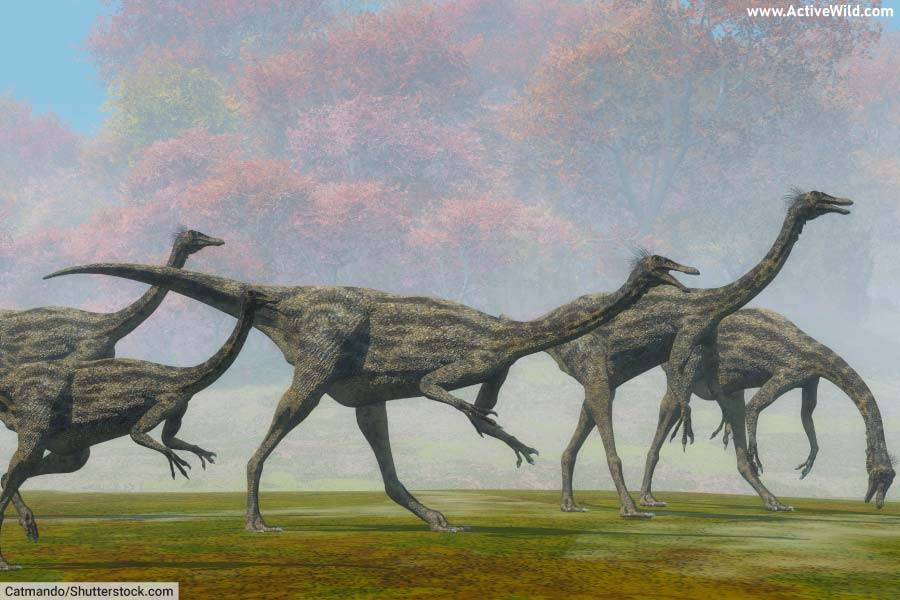
- Type: Ornithomimid (Omnivore)
- Where Found: Asia (Mongolia)
- When it Lived: Late Cretaceous (70 million years ago)
Gallimimus was a fast and agile theropod dinosaur known for its ostrich-like appearance, with a small head, large eyes, long neck, and slender legs. It lived during the Late Cretaceous period, around 70 million years ago, in what is now Mongolia.
Gallimimus was likely an omnivore, feeding on plants, small animals, and insects. It was up to 20 feet in length and weighed around 440 pounds. Its speed and bird-like characteristics have made it a popular dinosaur in popular culture, notably appearing in Jurassic Park, where it is depicted in dramatic herd scenes, emphasizing its swift and social behavior as it flees from predators.
You can find out more about this dinosaur on this page: Gallimimus Facts
Giganotosaurus
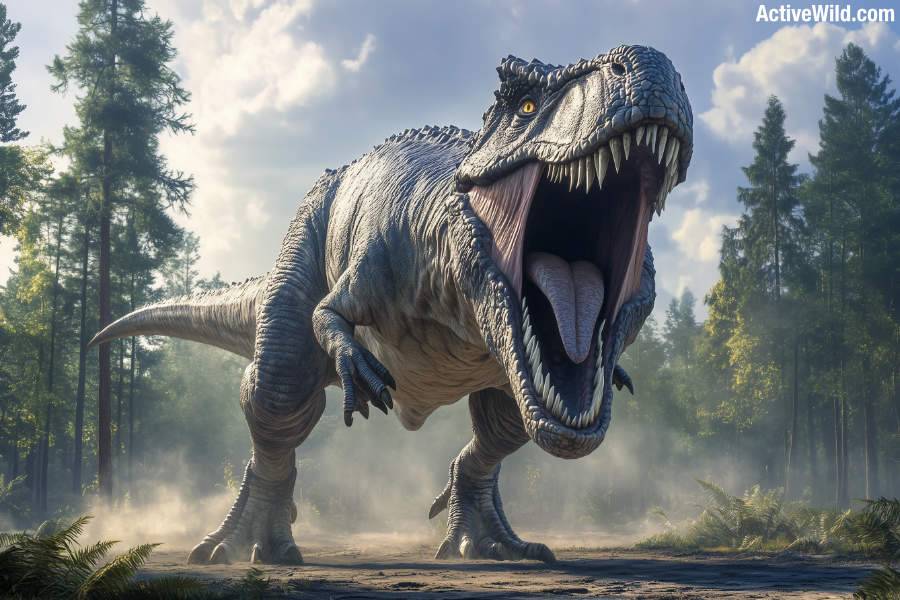
- Type: Theropod (Carnivore)
- Where Found: South America (Argentina)
- When it Lived: Late Cretaceous (99-97 million years ago)
Measuring up to 43 feet in length and weighing around 8 tons, Giganotosaurus was one of the largest known theropod dinosaurs, rivaling the size of the famous Tyrannosaurus Rex.
This popular dinosaur lived during the Late Cretaceous period, around 99-97 million years ago, in what is now South America (Argentina).
Giganotosaurus had a powerful build, with a massive skull and large, serrated teeth, making it a formidable predator capable of taking down large sauropods. Its appearance in Jurassic World Dominion has solidified its status as one of the most fearsome predators in popular culture.
You can find out more about this dinosaur on this page: Giganotosaurus Facts
Iguanodon

- Type: Ornithopod (Herbivore)
- Where Found: Europe (Belgium, UK, Germany), North America, Asia
- When it Lived: Early Cretaceous (126-122 million years ago)
Iguanodon was a large herbivorous dinosaur that lived during the Early Cretaceous period, around 126-122 million years ago, in what is now Europe and possibly North America and Asia.
Iguanodon was one of the first dinosaurs ever discovered and named and for this reason is important in the fields of paleontology. It is known for its distinctive thumb spikes, which were likely used for defense against predators.
Measuring up to 30 feet in length and weighing about 3-5 tons, Iguanodon had a beak-like mouth suited for a plant-based diet.
You can find out more about this dinosaur on this page: Iguanodon Facts
Megalosaurus
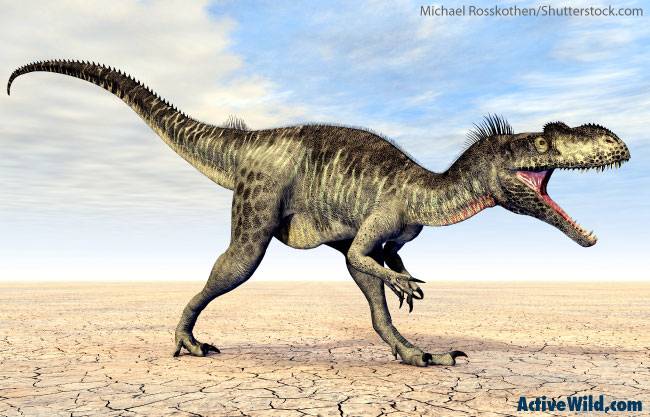
- Type: Theropod (Carnivore)
- Where Found: Europe (UK, France, Portugal)
- When it Lived: Middle Jurassic (166-161 million years ago)
Known for being one of the first dinosaurs ever named, Megalosaurus often features in classic dinosaur media.
Megalosaurus is historically significant as the first dinosaur to be scientifically named and described in 1824, sparking the field of paleontology.
This large theropod lived during the Middle Jurassic period, around 166-161 million years ago, in what is now Europe, particularly in the UK. Measuring about 20-30 feet in length and weighing up to 1.5 tons, Megalosaurus was a formidable carnivore with strong jaws and sharp teeth, preying on smaller dinosaurs and possibly scavenging.
Its status as a pioneering discovery and its portrayal in early dinosaur reconstructions have made Megalosaurus an enduring figure in paleontology, symbolizing the beginning of our understanding of dinosaurs.
You can find out more about this dinosaur on this page: Megalosaurus Facts
Mosasaurus
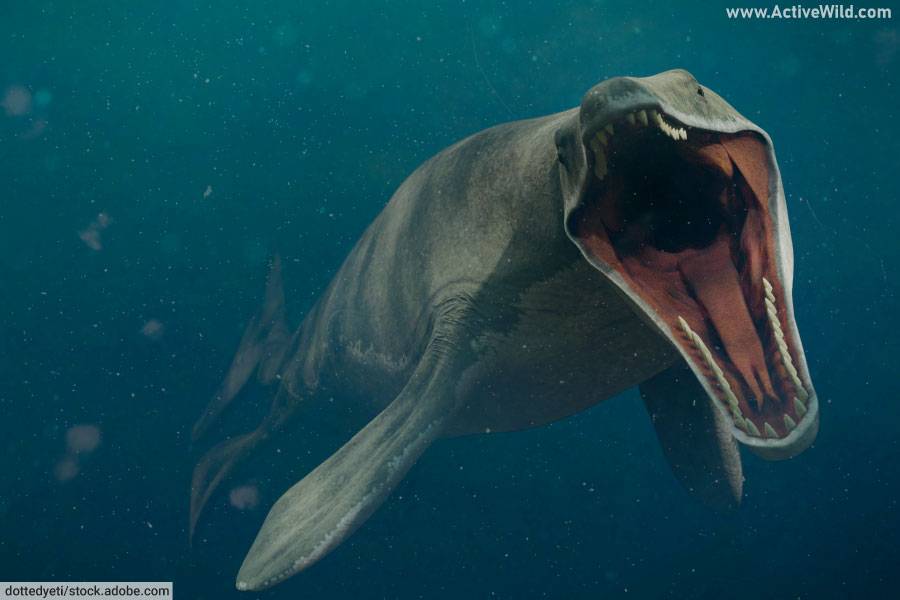
- Type: Mosasaur (Marine Reptile, Carnivore)
- Where Found: Worldwide (Europe, North America, South America)
- When it Lived: Late Cretaceous (82-66 million years ago)
Mosasaurus was a massive marine reptile that dominated the seas during the Late Cretaceous period, around 82-66 million years ago. Although not a dinosaur, it lived alongside them and has become equally iconic in popular culture.
Measuring up to 50-60 feet in length, Mosasaurus had a powerful tail, paddle-like limbs, and a long, muscular body, making it an efficient predator capable of hunting large fish, including sharks, and marine reptiles.
The popularity of Mosasaurus surged with its appearance in Jurassic World, in which it stole several scenes.
You can find out more about this prehistoric animals on this page: Mosasaurus Facts
Pachycephalosaurus
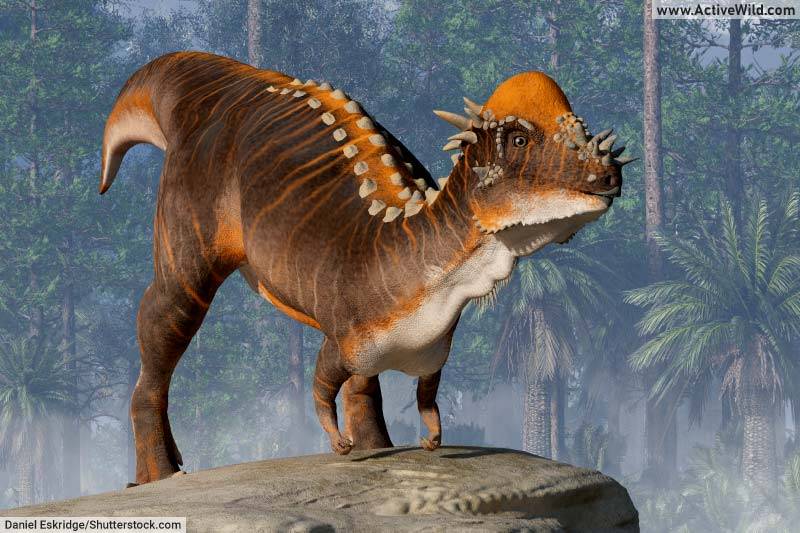
- Type: Pachycephalosaurid (Herbivore/Omnivore)
- Where Found: North America (USA, Canada)
- When it Lived: Late Cretaceous (68-66 million years ago)
Pachycephalosaurus was a unique herbivorous dinosaur known for its thick, dome-shaped skull, which could be up to 10 inches thick. It lived during the Late Cretaceous period, around 68-66 million years ago, in what is now North America. Measuring around 15 feet in length and weighing up to 1,000 pounds, it likely used its skull in head-butting contests, either for defense or dominance displays.
The unusual appearance and potential behavioral traits of Pachycephalosaurus have made it a popular dinosaur in films such as The Land Before Time and Jurassic Park: The Lost World.
You can find out more about other cool dinosaurs on this page: Cool Dinosaurs
Parasaurolophus
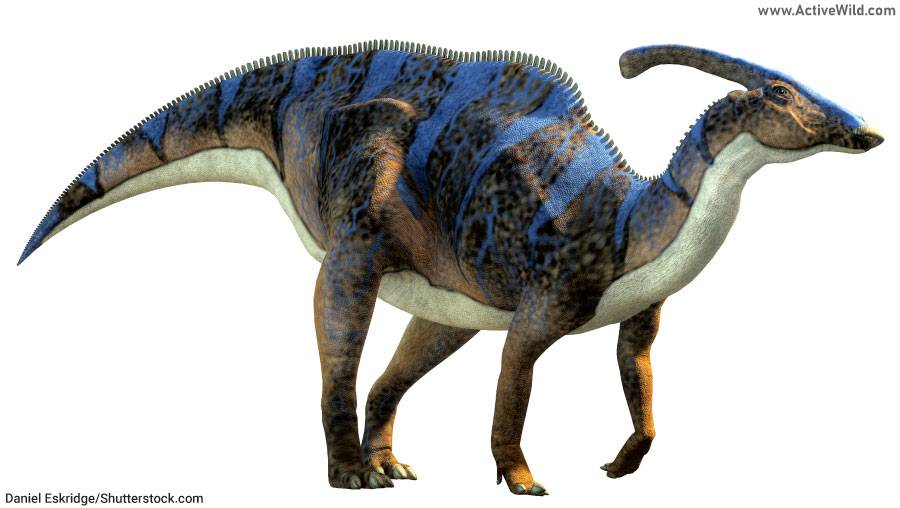
- Type: Hadrosaurid (Herbivore)
- Where Found: North America (USA, Canada)
- When it Lived: Late Cretaceous (76-74 million years ago)
Parasaurolophus was a hadrosaurid, or “duck-billed” dinosaur, known for its long, backward-curving skull crest. This herbivorous dinosaur lived during the Late Cretaceous period, around 76-74 million years ago, in what is now North America.
Parasaurolophus likely used its crest for communication, possibly producing resonant sounds, and for display within its species.
Its unique and elegant appearance, combined with its frequent depiction in films, documentaries, and video games, has made it a popular and recognizable dinosaur among the “duck-billed” dinosaur group.
You can find out more about this dinosaur on this page: Parasaurolophus Facts
Pteranodon
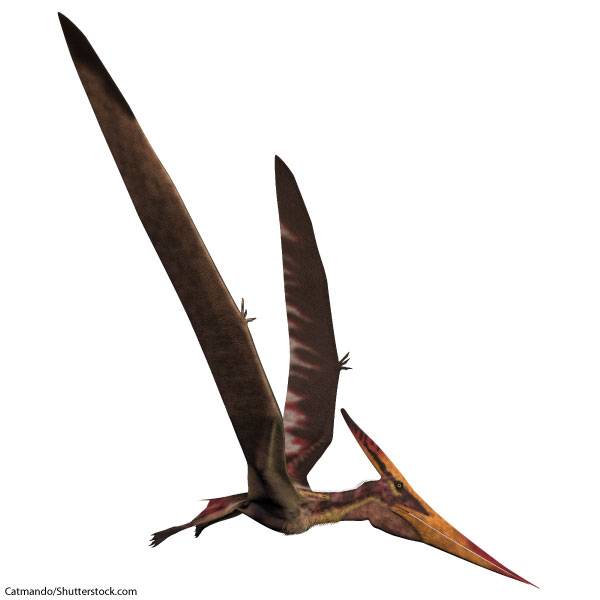
- Type: Pterosaur (Flying Reptile)
- Where Found: North America (USA)
- When it Lived: Late Cretaceous (86-84 million years ago)
Pterosaurs were the earliest-known flying vertebrates; dinosaurs only evolved the power of flight later, as they evolved into birds.
Pteranodon is a genus of large pterosaurs, known for its impressive wingspan of up to 33 feet and its distinctive cranial crest. It lived during the Late Cretaceous period, around 86-84 million years ago, in what is now North America.
Pteranodon was likely a piscivore (fish-eater).
You can find out more about pterosaurs on this page: Pterosaur Facts
Spinosaurus
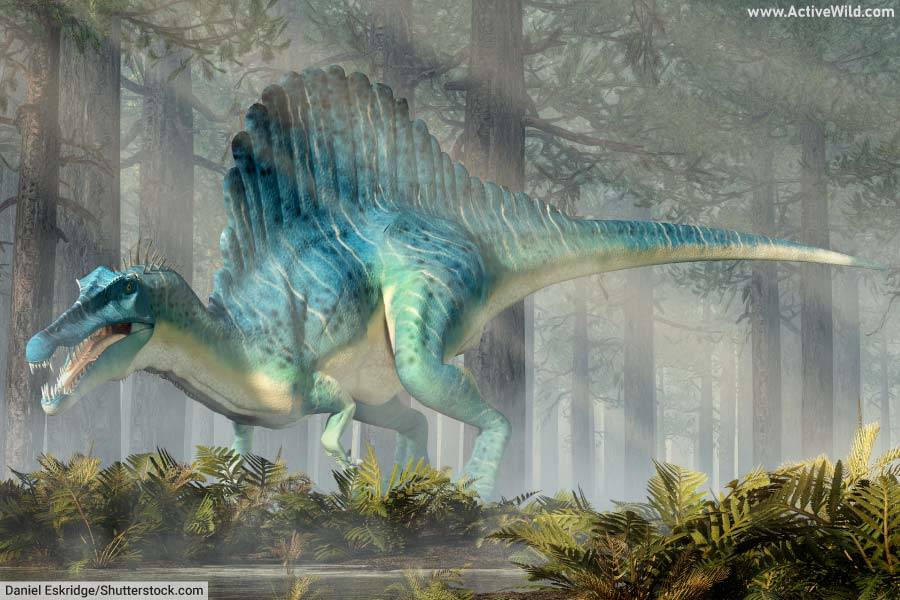
- Type: Theropod (Carnivore/Piscivore)
- Where Found: North Africa (Egypt, Morocco)
- When it Lived: Late Cretaceous (99-93 million years ago)
Spinosaurus was one of the largest carnivorous dinosaurs, distinguished by its unique sail-like structure of spines on its back. It lived during the Late Cretaceous period, around 99-93 million years ago, in what is now North Africa.
Measuring up to 50-60 feet in length and weighing up to 20 tons, Spinosaurus was an apex predator with a crocodile-like snout adapted for catching fish. It likely had a semi-aquatic lifestyle.
In Jurassic Park III, Spinosaurus was depicted as a fierce rival to the T. rex.
You can find out more about this dinosaur on this page: Spinosaurus Facts
Stegosaurus
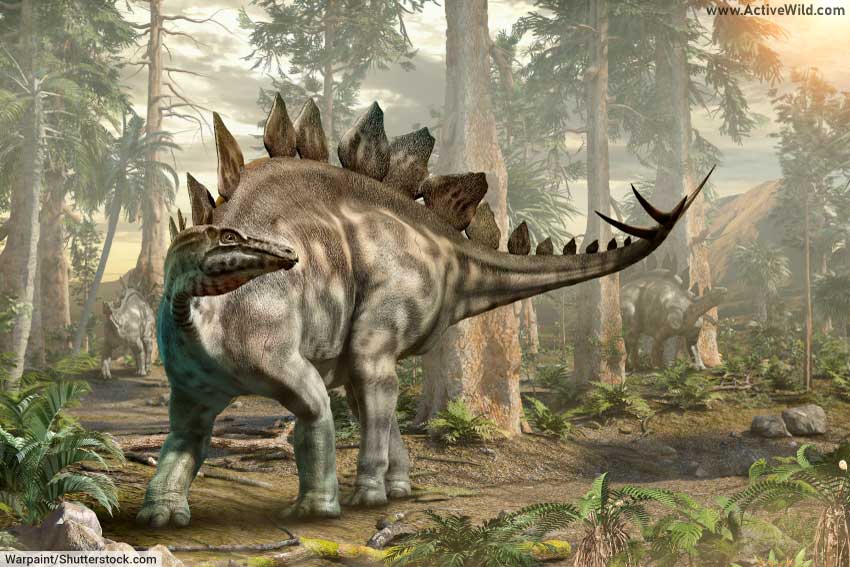
- Type: Stegosaurid (Herbivore)
- Where Found: North America (USA)
- When it Lived: Late Jurassic (155-150 million years ago)
Stegosaurus was a distinctive herbivorous dinosaur known for its double row of large, bony plates along its back and four-spiked tail (known scientifically as a “thagomizer”). It lived during the Late Jurassic period, around 155-150 million years ago, in what is now North America.
Stegosaurus could reach up to 30 feet in length and weighed around 5-7 tons. Despite its relatively small brain size, its unique appearance has made it a favorite in dinosaur media, from children’s books to films.
You can find out more about this dinosaur on this page: Stegosaurus Facts
Styracosaurus
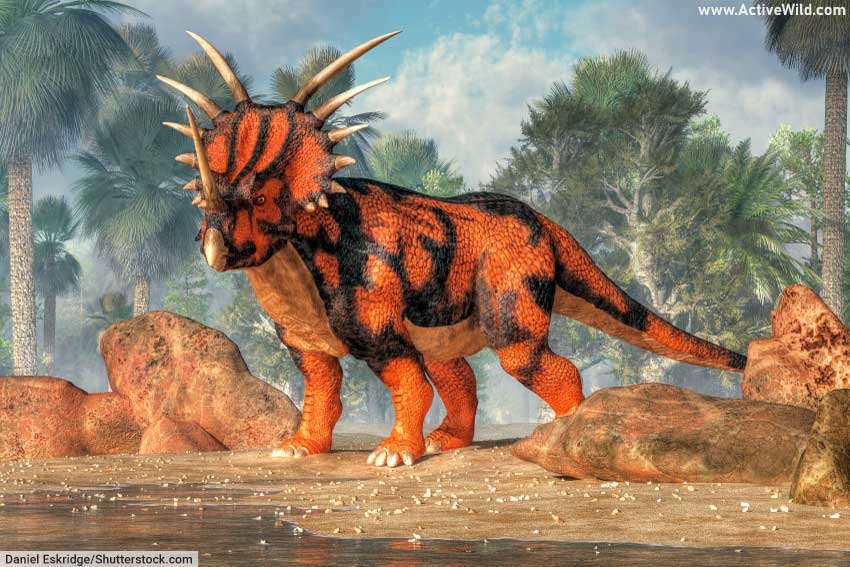
- Type: Ceratopsid (Herbivore)
- Where Found: North America (Canada)
- When it Lived: Late Cretaceous (75-72 million years ago)
Styracosaurus was a ceratopsid dinosaur known for its distinctive appearance, with a large frill adorned with six long spikes and a prominent horn on its nose. It lived during the Late Cretaceous period, around 75-72 million years ago, in what is now North America.
Measuring about 18 feet in length and weighing around 3 tons, Styracosaurus was a herbivore that likely used its horns and frill for defense, display, or combat within its species.
You can find out more about dinosaurs on this page: Dinosaurs – The Complete Guide
Suchomimus
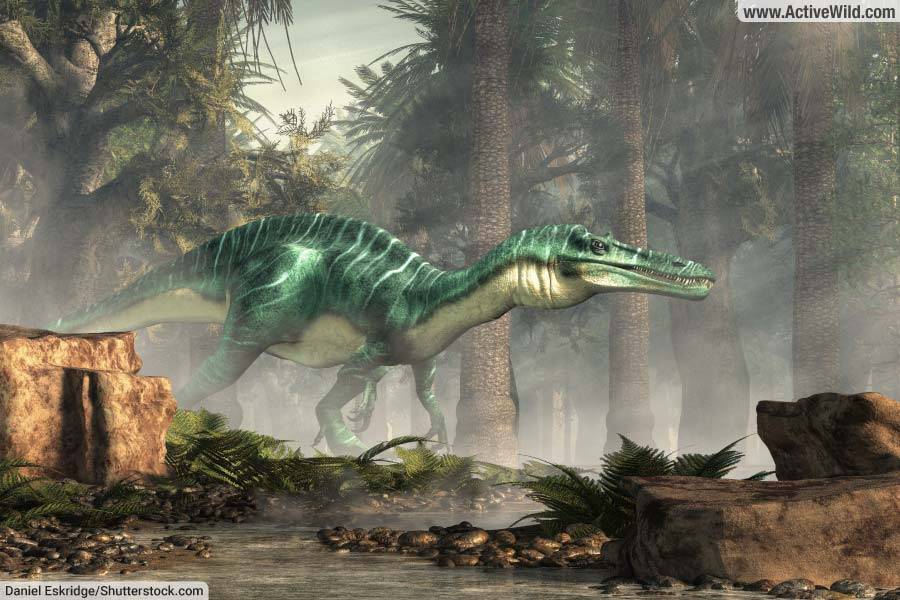
- Type: Spinosaurid (Carnivore/Piscivore)
- Where Found: Africa (Niger)
- When it Lived: Early Cretaceous (125-112 million years ago)
Like Spinosaurus, Suchomimus was a spinosaurid theropod dinosaur. It lived during the Early Cretaceous period, around 125-112 million years ago, in what is now Africa (Niger).
Suchomimus had powerful forelimbs with large claws that may have aided in fishing or hunting. It measured up to 36 feet in length and weighed around 3-5 tons.
You can find out more about dinosaurs on this page: Dinosaurs – The Complete Guide
Therizinosaurus

- Type: Therizinosaurid (Herbivore)
- Where Found: Asia (Mongolia)
- When it Lived: Late Cretaceous (70-66 million years ago)
Therizinosaurus was a highly unusual theropod dinosaur recognized for its enormous, scythe-like claws, which could reach lengths of up to 3 feet. Measuring around 30-33 feet in length and weighing approximately 3-5 tons, Therizinosaurus lived during the Late Cretaceous period, around 70-66 million years ago. Its remains have been found in what is now Mongolia.
Unlike most theropods, Therizinosaurus was likely herbivorous or omnivorous, using its claws to reach vegetation. Its bizarre appearance and unique ecological role have made it a fascinating subject in dinosaur documentaries and the Jurassic World franchise, captivating fans with its alien-like features.
You can find out more about other well-known dinosaurs on this page: Famous Dinosaurs
Triceratops

- Type: Ceratopsid (Herbivore)
- Where Found: North America (USA)
- When it Lived: Late Cretaceous (68-66 million years ago)
Triceratops was one of the most recognizable herbivorous dinosaurs, known for its distinctive three horns and large bony frill that extends from the back of its skull. It lived during the Late Cretaceous period, around 68-66 million years ago, in what is now North America.
Weighing up to 12 tons and measuring about 30 feet in length, Triceratops was a formidable presence, likely using its horns for defense against predators like Tyrannosaurus Rex.
Triceratops’ iconic appearance and frequent depiction in films, cartoons, and documentaries have cemented its status as one of the most popular dinosaurs, representing the classic “horned dinosaur” image.
You can find out more about this dinosaur on this page: Triceratops Facts
Troodon
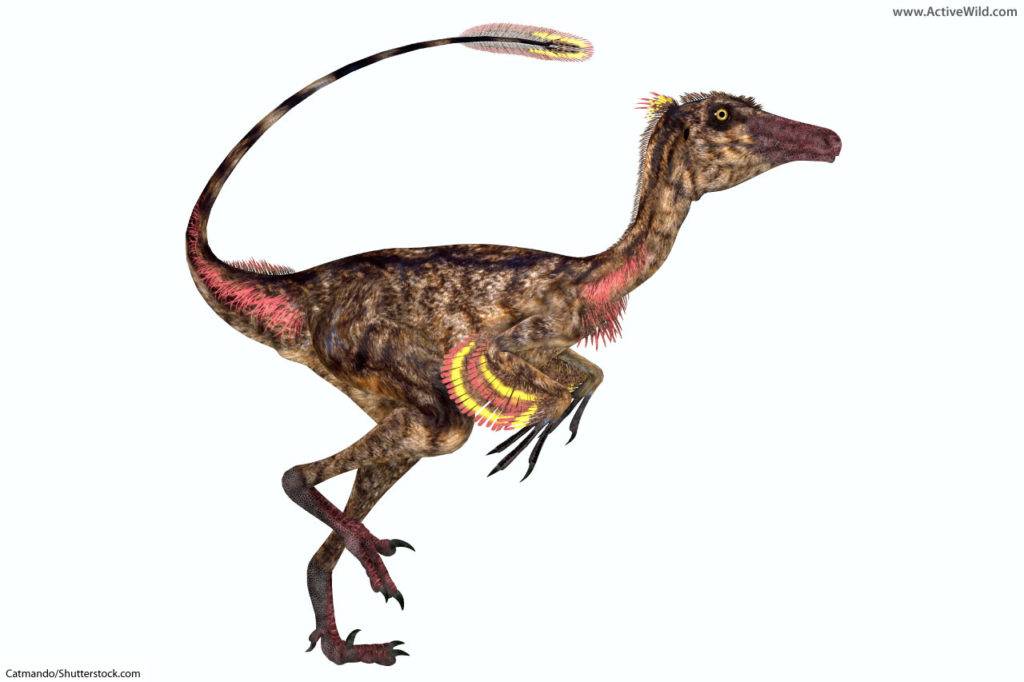
- Type: Troodontid (Omnivore)
- Where Found: North America (USA, Canada)
- When it Lived: Late Cretaceous (77-66 million years ago)
Troodon is known for its relatively high intelligence among dinosaurs, inferred from its large brain-to-body ratio. It lived during the Late Cretaceous period, around 77-66 million years ago, in what is now North America (USA, Canada).
Measuring about 6-8 feet in length and weighing approximately 70 pounds, Troodon was a small, agile theropod with keen eyesight and a likely omnivorous diet.
Its potential as a “thinking” dinosaur has made Troodon popular as a symbol of what advanced dinosaur intelligence might have been like.
You can find out more about this dinosaur on this page: Troodon Facts
Tyrannosaurus Rex (T. rex)
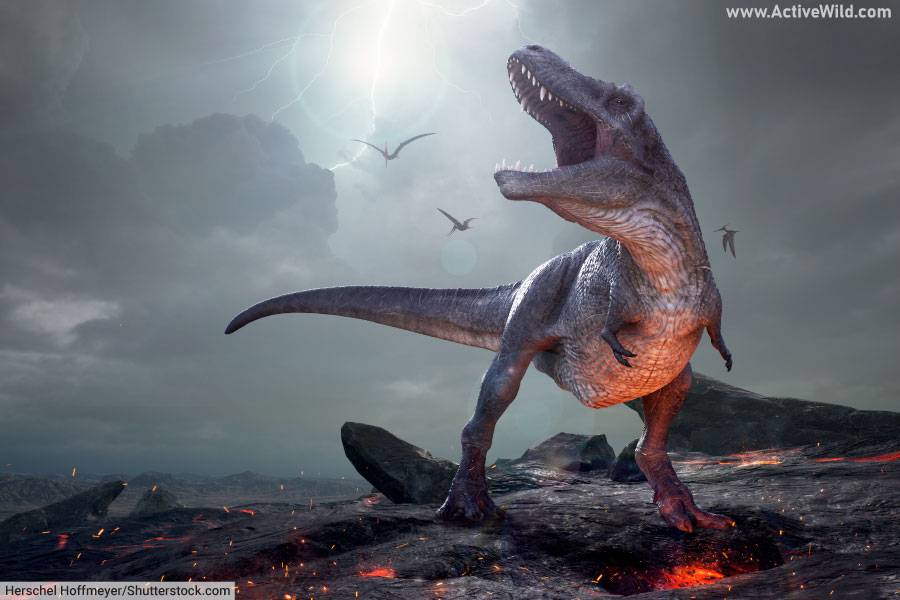
- Type: Theropod (Carnivore)
- Where Found: North America (USA, Canada)
- When it Lived: Late Cretaceous (68-66 million years ago)
Tyrannosaurus Rex, or T. rex, is one of the most iconic dinosaurs in popular culture. Known for its massive size, powerful jaws, and razor-sharp teeth, T. rex was a formidable apex predator of the Late Cretaceous period, around 68-66 million years ago.
Standing up to 20 feet tall and reaching lengths of 40 feet, this huge predator could weigh up to 9 tons.
The popularity of T. rex skyrocketed due to its starring role in the Jurassic Park film franchise.
You can find out more about this dinosaur on this page: T. Rex Facts
Utahraptor
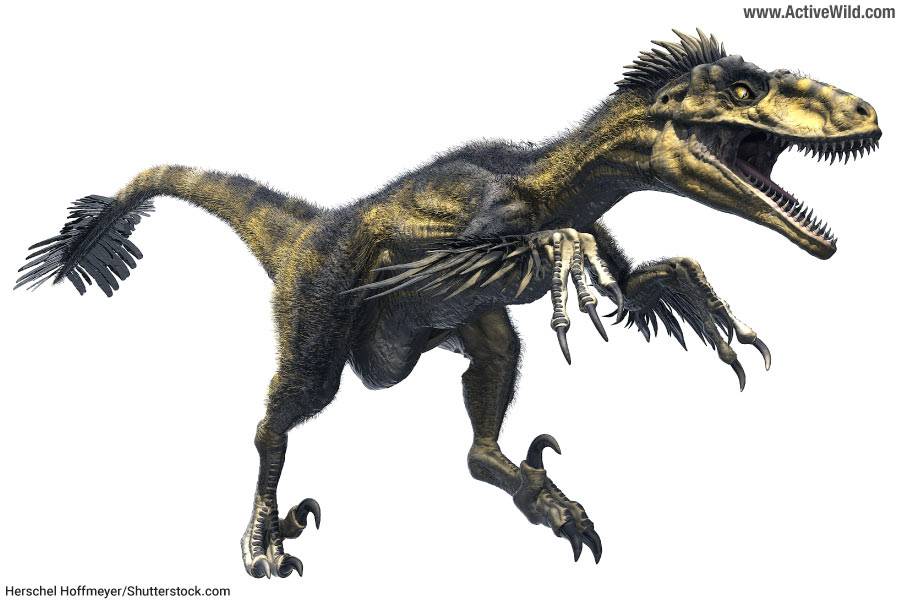
- Type: Dromaeosaurid (Carnivore)
- Where Found: North America (USA)
- When it Lived: Early Cretaceous (126 million years ago)
Utahraptor was the largest known member of the dromaeosaurid family, and is famous for its formidable size and deadly claws. It lived during the Early Cretaceous period, around 126 million years ago, in what is now North America (Utah, USA).
Utahraptor had powerful legs, a strong tail for balance, and a large, curved claw on each hind foot used for slashing prey. Measuring up to 23 feet in length and weighing around 1,100 pounds, Utahraptor is often depicted as a fearsome, intelligent pack hunter.
You can find out more dinosaurs on this page: Dinosaurs – The Complete Guide
Velociraptor
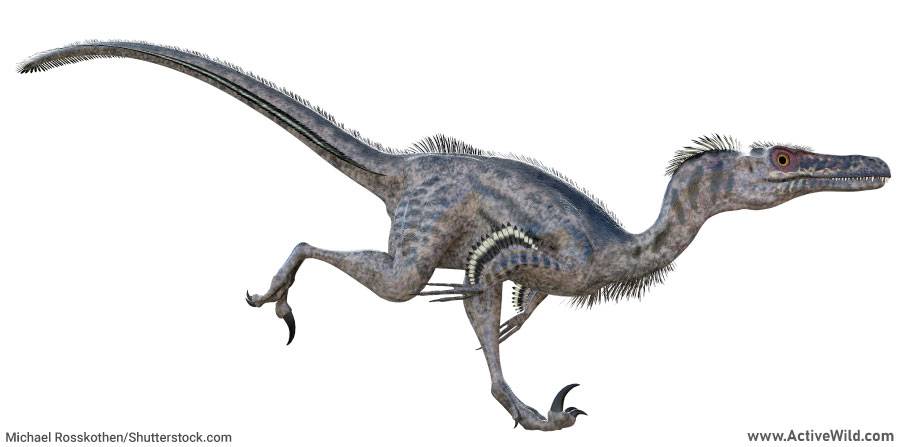
- Type: Theropod (Carnivore)
- Where Found: Central Asia (Mongolia)
- When it Lived: Late Cretaceous (75-71 million years ago)
Velociraptor was a small, agile theropod dinosaur that lived during the Late Cretaceous period, around 75-71 million years ago, in what is now Mongolia.
Velociraptor is famous for its appearance, both as a villain and as a hero, in the Jurassic Park franchise, in which it was depicted as a highly intelligent, cunning, and social predator.
In reality, Velociraptor had feathers and was likely a pack hunter, but it was much smaller than the movie version. Its sharp claws, speed, and intelligence have made it one of the most popular dinosaurs in pop culture.
You can find out more about this dinosaur on this page: Velociraptor Facts
Discover More with Active Wild
Discover more about dinosaurs and prehistoric life on these pages:
Visit our main dinosaur page for A Complete Guide To Dinosaurs
You can find out more about the different types of dinosaurs on this page: Types Of Dinosaurs
The post The Most Popular Dinosaurs: List With Pictures & Interesting Facts appeared first on Active Wild.
